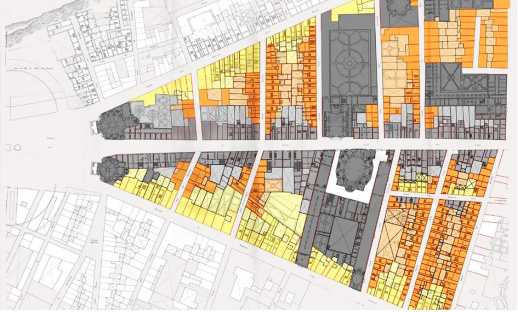"PROFFERLO HOUSE" IN ROME
NOTES ON BASE BUILDING
G.Strappa
The most successful examples of a congruent and proportionate overlap of the modern city with the ancient one is in large part due to the “recasting process” of the existing urban fabric. The act of recasting is not the simple union of elements, it is a plastic modification, a collaboration that implies a structural mutation: the merging and gathering of the individual units into a single whole, into a new unity of a higher degree. The Renaissance palace is, when it derives directly from the fabric, a critical recasting, made with the decisive contribution of the architect who operates the aesthetic synthesis at the end of a “necessary” process. To fully understand its meaning it is essential to mention, at least, the matter of this recast, which, in many areas and especially in Italy, consists of single-family houses. A particularly significant example, from this point of view, is the form of the dwelling house in the Roman area, whose roots date back to the types used from the XI century, in an environment that, due to the low population density, could be considered in large part semi-rural (26).
CLICK HERE TO CONTINUE READING base building

